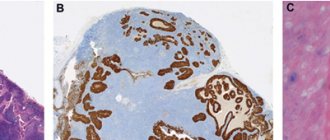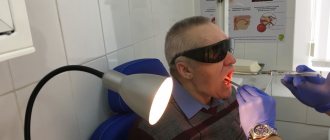Chronic tonsillitis is a process that is quite difficult to deal with, because often its signs are ignored or simply not noticed by patients, and doctors rarely pay due attention to it - until the patient himself begins to complain of feeling unwell. During exacerbations of the disease, a course of antibacterial agents is usually prescribed, and with a short “experience” of the disease, they help well. However, over time, the effectiveness of antibiotics decreases, and often those drugs that suppressed the growth of microbes during the first attacks cease to have any effect in the future. What explains this?
Washing methods
This procedure must be carried out carefully, it is better to have it done by a specialist, since with the wrong approach you can aggravate the situation up to the development of sepsis, driving the inflammatory process even deeper or damaging soft tissues.
Washing of the lacunae of the tonsils is carried out in the following ways:
- Using a syringe for intralaryngeal infusions and rinsing of the tonsils.
- Vacuum rinsing of tonsils with the Tonsilor apparatus.
- Deep rinsing using phonophoresis and ultrasound.
How is the procedure performed?
All rinsing methods are based on exposing the tonsils to a stream of disinfecting solution or vacuum. Cleaned tonsils are treated with medications.
Processing each tonsil takes from 30 seconds to 1.5 minutes. The time depends on the choice of type of cleaning of the lacunae and the depth of damage to the lacunae.
Important! Before the procedure, you cannot eat for 1.5-2 hours. This is due to the fact that rinsing provokes a gag reflex.
To prevent possible discomfort, the doctor treats the tonsils with a local anesthetic with lidocaine or novocaine in the form of a spray.
Flushing with a syringe
This method can be offered in any clinic. It is considered painless and lasts about 10 minutes. The patient is seated and asked to open his mouth. A cannula is attached to the syringe. The surface of the pharynx is treated with a solution of local anesthetic. They do this to reduce discomfort during manipulation.
After this, the cannula of the syringe is inserted into the cavities of the tonsils and their contents are sucked out. This can be pus, microorganisms and their metabolic products, food debris, or liquid. After the procedure, the surface is irrigated with anti-inflammatory solutions.
What are lacunae
The tonsils are covered on the outside with a mucous membrane with depressions called lacunae. They protect the body from pathogens and ensure filtration of everything that enters the mouth.
In the follicles that make up the tonsils, lymphocytes mature and are released onto the surface of the lacunae to destroy microbes. In a healthy person, the lacunae cleanse themselves.
Vacuum rinsing of tonsils
Modern otolaryngological offices carry out rinsing of the tonsils with Tonsilor - a special device that carries out cleaning using ultrasound and antiseptic solutions.
It quickly helps to achieve the desired result and has the following effect after use:
- anesthetic;
- antibacterial and antifungal;
- increases local immunity;
- restores normal microflora on the surface of the tonsils.
Why do you need to rinse your tonsils?
The palatine tonsils are an organ of the human immune system. They are located at the very entrance to the pharynx on both sides. Outwardly, they resemble almonds. This similarity gave this organ its name. The tonsils consist of a large number of winding canals - crypts. On the surface of the tonsils there are small depressions - lacunae. It is in them that tonsillitis plugs accumulate, which are removed by washing.
Our tonsils act like a filter. They filter everything that enters the oral cavity from outside. And if infectious flora gets on the surface of the tonsils, they begin to produce lymphocytes - cells of the immune system that begin to fight the “enemy”.
If the body's defenses are not enough to cope with viruses and bacteria, an inflammatory process (chronic tonsillitis) starts in the palatine tonsils. In the gaps, pathogenic microflora is activated, the remains of bacterial activity and dead leukocytes accumulate. This entire “mixture” is compressed and turns into white-yellow plugs on the tonsils, which are noticeable upon examination and emit an unpleasant odor. These plugs do not allow inflammation to subside, so sanitation of the tonsils is an important part of the treatment of chronic tonsillitis.
Often, rinsing is the only way to preserve the tonsils and avoid their removal.
Contraindications to washing with hardware methods
Despite such a positive effect from hardware methods, in some cases this method cannot be used. These include:
- Retinal detachment.
- Hypertension in stage 3 or 2B.
- 1st and third trimester of pregnancy.
- Acute forms of infectious diseases.
- Oncopathology.
- Atherosclerosis of coronary or cerebral vessels.
- Active tuberculosis.
- Disorders of the autonomic nervous system.
- Pathology of the respiratory and cardiovascular systems in the stage of decompensation.
Features of each technique
Despite the fact that the use of a syringe can significantly reduce the cost of treating the infected area, the method also has several significant disadvantages. The most important of them is the increased risk of injury, since if the doctor lacks experience, there is a high risk of causing microtrauma with a metal cannula.
If the doctor accidentally made a puncture, then this will result in prolonged healing, which, against the background of a general infection, will generally occur extremely slowly. A scar remains as an eternal reminder, which during the next exacerbation of chronic tonsillitis will become a significant obstacle to the outflow of fluid.
It turns out to be a vicious circle: the patient will get sick again, will come to the appointment again for syringe rinsing due to the inability of the tonsils to independently organize the outflow of fluid. Thus, even initially, for the first time, people who become ill can enroll in the circle of chronic patients.
Another difficulty may be the anatomical structure of the treated area. Due to the tortuosity, reaching all corners of the curved passages will be quite problematic. This increases the percentage probability that the infection will remain stuck for a long time at a practically inaccessible point, constantly making itself known after the condition has partially improved.
Against this background, many victims choose a hardware approach, which involves a higher cost. It also has a number of contraindications, among which pregnancy is especially prominent. When a woman in an interesting situation becomes a victim of a sore throat, she will be sent for treatment using syringe rinses that are safer for the fetus.
At the same time, vacuum intervention is ready to provide a more sustainable effect compared to its outdated counterpart. The method also allows you to almost completely eliminate the risks of a possible accidental puncture of part of the larynx. Regardless of the chosen measure, it is imperative to pay attention to the absolute prohibitions for implementing manipulation. These include:
- acute infectious diseases with elevated body temperature;
- oncological neoplasms of any location;
- tuberculosis.
A relative contraindication would be those people whose gag reflex is pronounced. If you manage to endure it the first time, then, as reviews indicate, in subsequent times the deficiency manifests itself much weaker.
Washing tonsils at home
If you have tonsillitis, you can rinse your tonsils at home. Someone close to you can help you with this, or do everything yourself. To begin, prepare a saline or furatsilin solution and thick cotton swabs. Soak the latter well with the resulting liquid and then wash the affected lacunae with light pressure. Repeat the action several times.
Those who know the exact location of the organ can manipulate it using a syringe. The needle is then removed. To use this method, you need to have certain skills.
Recommendations after procedures
Rinsing the lacunae of the tonsils is a physical effect on the inflamed tissue, so after cleansing, discomfort and mild pain are possible.
You cannot eat immediately after the procedure, the first meal should not be earlier than 30 minutes later. It is necessary to regularly gargle with miramistin, furatsilin solution, infusion of chamomile, oak bark.
Washing the tonsils is not a very pleasant procedure, but it is done quickly. Its effectiveness has been proven by many years of use for the relief of chronic tonsillitis.
Frequently asked questions related to the procedure
- How many treatments are needed? To get rid of tonsillitis you need to undergo 5-10 procedures. The specific number is determined by the doctor depending on the extent of the inflammatory process.
- Is pain relief provided? Although irrigation is carried out without a needle, local anesthesia is still used. They do this to reduce discomfort during manipulation.
- How to prepare for the procedure? Preparation consists of refusing to eat at least an hour before the upcoming wash.
- How often should you rinse your tonsils? The need for the procedure depends on the activity of the disease and the rate of accumulation of fluid, food particles, and bacteria in the lacunae. Only the attending physician can determine the frequency of washing. At least once a day.
- How long should I rinse my tonsils? Even if during a single procedure it was possible to completely remove the contents of the lacunae, the manipulation will have to be repeated at least 7-10 more times, it is better to do it every day. This is due to the constant proliferation of pathogenic microflora. And this approach will allow you to achieve stable remission.
- Are there any special features of oral hygiene during the course of treatment? During the course of treatment after each procedure, it is prohibited to eat for the first two hours. It is also worth giving up solid food during this period, since after eating it, a piece may get stuck in the passages.
Thus, washing the tonsils for tonsillitis is an effective treatment method. But if carried out incorrectly, a serious complication can develop, so it is better to contact a specialist.
When is the procedure indispensable?
Doctors recommend using the presented method in the early stages of the disease, or if you notice signs of exacerbation of chronic tonsillitis. But if the situation has worsened, then auxiliary means alone for disinfecting the tonsils will no longer be enough. Doctors prescribe “heavy artillery” like strong antibiotics.
Content:
- When is the procedure indispensable?
- Classification of techniques
- Features of each technique
- How to achieve increased efficiency?
The main problem of those who constantly suffer from tonsil lesions lies in the inability to finally get rid of the accumulated painful microorganisms. They, together with dead leukocytes, are localized in the tortuous passages and voids of the organ. Most pathogens and dead leukocytes will not be able to get out of there on their own.
In particularly advanced cases, even the use of pharmacological drugs does not help, because pathogens, especially in chronic diseases, quickly get used to any active substance. Instead of killing germs, medications, at best, weaken their activity, as streptococci and staphylococci become resistant. You can get rid of them only through direct exposure, which is typical for washing the gaps. If the patient experiences weakness, sore throat, as well as discomfort in the cervical and submandibular lymph nodes during the next exacerbation, then this is a reason to undergo the procedure.
Adjuvant therapy often eliminates the need for victims to have their tonsils removed. But targeted treatment will help only in the absence of significant complications such as infection of internal organs. When pathogens enter the bloodstream, they often provoke the rapid development of cystitis, pyelonephritis and adnexitis, even faster than usual.
Advantages of treatment at an ENT center
Treatment of ear, nose and throat diseases at the ENT CENTER is a comprehensive and individual approach to each patient. By making a preliminary appointment on the medical center’s website or by phone, you can:
- get face-to-face consultation with a specialist;
- undergo treatment of ENT diseases using progressive techniques;
- receive recommendations for further conservative treatment and prevention of ENT diseases.
Contact the ENT CENTER : here they will help you solve any problem within the competence of ENT doctors as efficiently, safely, quickly and painlessly as possible.
Contraindications
Treatment of lacunae is not prescribed for patients with:
- exacerbation of other chronic diseases, including caries;
- cancer diagnoses;
- in the 1st and 3rd trimester of pregnancy;
- pathology of the retina;
- severe pathologies of the heart and blood vessels;
- up to 3 years of age.
For hypertension, consultation with a specialized specialist is required.
Important! It is necessary to warn the doctor about any existing individual intolerance to drugs.
What methods are used
The purpose of flushing is to remove the purulent exudate accumulated in the tonsils. This is done using liquid or vacuum. Methods used:
- With a syringe. Rinsing with a syringe is one of the simplest and most accessible ways to clean the cavities of the lacunae. The slight pressure of a stream of antiseptic liquid, created by pressing the piston, breaks the plugs and removes accumulations of pus. After washing the solution, the person spits it out.
- Vacuum. The Tonzillor-MM device is used. The vacuum method is more effective. The plugs are crushed by ultrasound and “sucked out” using a vacuum. Using the method allows you to achieve complete cleansing of the lacunae and ensure deep penetration of drugs into the tonsil tissue. The use of a vacuum allows you to avoid the spread of infection to nearby mucous membranes.
- Cavitation and ultrasound. The technique is based on the creation of a micro-shock wave. When passing through the treatment solution, ultrasound forms small bubbles that burst inside the lacuna, creating a shock wave. Washing is performed with the UZOL device. A new technique that is almost twice as effective as other methods, but not all clinics have the equipment.
Hardware flushing is performed under local anesthesia. When using a syringe, no anesthesia is required. But if a person experiences pain and discomfort, then the tonsils are irrigated with an anesthetic.
Puncture of the maxillary sinus
Practically not used in modern otorhinolaryngology. For acute bacterial sinusitis, systemic broad-spectrum antibacterial drugs are indicated, which successfully cope with the bacterial process without punctures and “cuckoos”.
Punctures for a bacterial process in the maxillary sinuses are mainly indicated if culture of the sinus contents is needed - usually when 1-2 courses of antibacterial therapy are ineffective.
Very rarely, such punctures are performed for diagnostic purposes, when it is not possible to perform radiography or computed tomography of the paranasal sinuses. Another indication is severe pain associated with the pressure of the contents on the walls of the sinus. The puncture is done once during the main treatment. Several punctures are indicated only in the case of a persistent bacterial process with two or more courses of antibiotics, and there is no possibility of performing endoscopic surgery on the sinuses.
It has been proven that puncture of the maxillary sinus does not speed up the healing process.
It is important to know : puncture, like any invasive method, can have complications, including trauma to the medial wall of the orbit, nasolacrimal duct, soft tissues of the cheek, and nosebleeds.
“Cuckoo” or nasal lavage using the Proetz fluid movement method
A method developed by American otorhinolaryngologist Arthur Proetz more than a century ago. For many years it was used by ENT doctors to treat acute diseases of the nose and paranasal sinuses.
Russian ENT doctors prescribe “cuckoo” for almost any patient complaint, from acute rhinitis and sinusitis to acute adenoiditis and eustachitis. Washing technique: the patient lies on his back (less often sits), an antiseptic solution is pumped into one half of the nose, and removed from the other using suction. During the procedure, he is asked to pronounce the word “cuckoo” to reduce the likelihood of the solution getting into the throat and larynx (this causes the soft palate to rise, closing the nasopharynx). However, there is still a high risk of liquid entering the respiratory tract, especially in children who do not always understand what is required of them and behave restlessly.
Due to the creation of negative pressure in the nasal cavity, “cuckoo” can be traumatic for the inflamed mucous membrane of the nasal cavity, and if there is severe swelling in the nose and nasopharynx, it can be painful for the ears.
The use of “complex compounds” for rinsing is less preferable than saline solution. Antiseptics can additionally dry out the inflamed mucous membrane of the nasal cavity. Adding antibiotics to the solution also does not provide a therapeutic effect (in “cuckoo” it is often the reserve antibiotic dioxidine; its side effects are dangerous: experimental studies have shown that it has a mutagenic and damaging effect on the adrenal cortex). The addition of hormonal drugs such as dexamethasone or hydrocortisone is also not justified - there are more suitable hormones for use in the nasal cavity (mometasone, fluticasone, budesonide, etc.). If indicated, these sprays can be successfully used; however, they have low bioavailability, that is, they act only in the nose, without having a systemic effect on the body and without significant side effects.
It has been proven that nasal rinsing with positive pressure (Dolphin balloon, Neti pot) is more effective. Such rinses are especially effective for allergic rhinitis and chronic sinusitis.
Important to know : in acute bacterial sinusitis, it makes sense to discuss the use of oral antibiotics only. Neither topical antibiotics nor local antiseptics are indicated, even as an adjunct to treatment.
Solutions for cleaning sore tonsils
To cleanse the tonsils, use pharmaceutical antiseptic drugs or prepare the products yourself. There are several reliable home solutions for treating tonsils.
- Saline solution. This medicine perfectly kills pathogenic bacteria and accelerates the regeneration of the mucous membrane.
- Soda solution. The medicine not only kills bacteria, but also softens the tissues and relieves swelling. Prepare a solution at the rate of: 1 tsp. soda per glass of water.
- A solution of soda with salt and iodine. The medicine has a very strong effect. For this, dissolve a teaspoon of soda and salt in a glass of water. Then 3 drops of iodine are added to the product.
The washing procedure can also be carried out with the following pharmaceutical preparations:
- Furacilin;
- Chlorophyllipt - it must be dissolved in a volume of 1 tsp. for 150 ml of water. In addition to the antiseptic effect, the composition helps relieve pain and irritation.
Both homemade and pharmaceutical preparations can be used for rinsing equally for children and adults. When carrying out the procedure, it is important to remember that all solutions must be warm.
What to do if your throat constantly hurts? Is this an infection?
No, persistent sore throat is most often caused by non-infectious causes. The most common cause is acid from the stomach entering the back of the throat through the esophagus. This condition is medically called gastroesophageal, or extraesophageal, reflux. This is a very common illness that can occur without abdominal pain or heartburn. If heartburn occurs constantly and your throat often hurts, then the connection between these events is obvious and you need to deal with this particular problem, and not try to cure your throat.
Procedure methods
If plaque appears on the tonsils, you should contact an otolaryngologist. During the initial examination, the doctor makes a diagnosis and determines the extent of the lesion. Based on the results obtained, the specialist selects the optimal technique, which is aimed at clearing the gaps from the accumulation of pathogenic microorganisms.
In accordance with the degree of damage to angina, as well as depending on the characteristics of the patient’s body, the optimal method of rinsing is selected:
- Hardware. Vacuum equipment works in a special way - it operates on the principle of a vacuum cleaner. The device collects pathogenic contents from the lacunae, clearing the larynx area. Thanks to the effects of ultrasound, the inflammatory process is “extinguished” by reducing pathogenic manifestations. Radiation promotes the penetration of the antiseptic solution used into the deep layers of tissue.
- Using a syringe. A cannula with a brass rod is attached to the syringe. The deep part of the throat is treated. The patient is required to remain in a stationary position with his mouth wide open.
Procedures last up to 10 minutes. Liquid is pumped out of the lacunae. This is necessary to ensure guaranteed cleansing of purulent plugs, as well as food debris, pathogenic microorganisms and waste products of dangerous bacteria.
Flushing with a syringe
The time-tested mechanical method significantly reduces the cost of treating the affected area. Most often used for children.
Benefits of flushing with a syringe:
- an accessible method of getting rid of pathogens;
- minimal number of contraindications;
- persistent therapeutic effect.
During the procedure, local antibacterial and antiseptic agents are used, which act locally - exclusively on the inflamed area. This approach eliminates the development of allergic reactions and various complications characteristic of oral antibiotics.
Hardware method
Vacuum washing allows you to achieve a more sustainable effect when compared with the previous method. The hardware method is most often used for teenagers.
The procedure is contraindicated in the following cases:
- more acute infectious disease, which is accompanied by elevated body temperature;
- a history of cancer;
- tuberculosis.
Among the relative indications, an increased gag reflex should be highlighted. In this case, the procedure cannot be performed.
Flushing the tonsils with an irrigator
First you need to choose a suitable irrigator model. It can be portable or stationary, pulsed or microbubble. Portable models are not suitable for washing tonsils, as they have one significant drawback - the inability to smoothly switch the water supply mode. A sudden change in pressure and jet pressure can lead to tissue injury. Therefore, it is better to choose stationary models for washing the tonsils.
They are more functional and have several operating modes, including for cleaning gums and tonsils. In addition, stationary irrigators come with several nozzles, while portable ones are sold with one, or maximum two nozzles.
The minimum value of the cleaning jet pressure created by an irrigator suitable for washing tonsils should not be more than 150 kPa. Waterpik WP-108 E2 Ultra is ideal for this procedure - a stationary device that supplies pressure from 70 to 560 kPa. There is a lever on the handle for smooth switching of modes. You need to start the procedure with the weakest pressure, gradually increasing it. The device comes complete with 7 attachments. One of them is designed to clean gum pockets. It can also be used to wash the tonsils. Two standard attachments are also suitable for this.
Another suitable irrigator that can be used to wash tonsils is available under the brand name Aquapick AQ-300. It has several operating modes and 4 attachments included. The reservoir is quite large - 600 ml. It is enough for a complete cleaning for two or three family members. This device can be mounted on the bathroom wall using a bracket. It is not cheap, but it is one of the most functional. There is also a more budget option - B.Well WI-922. This device can be used to clear tonsils, but the minimum power it produces is 200 kPa. This irrigator is not suitable for children to wash their tonsils.
Our online store offers many stationary irrigators that can be used for washing tonsils. When purchasing, consider the following indicators: jet power, minimum pressure, number of operating modes, pulsation frequency and tank volume. Now we’ll find out how to rinse your tonsils with an irrigator at home.







